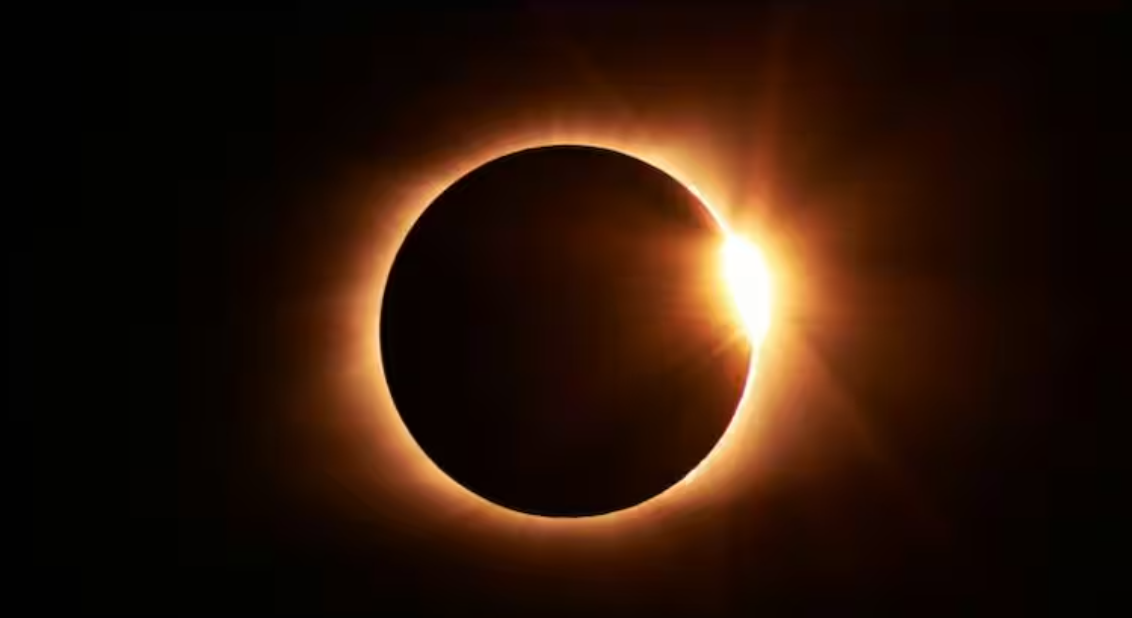On April 8, 2024, North America will witness a spectacular celestial event as a total solar eclipse traverses the continent. Spanning across parts of 15 U.S. states, this event promises an awe-inspiring display for astronomy enthusiasts. Maps detailing the trajectory and timing of the eclipse offer guidance to eager viewers.
Commencing its journey along the Pacific Coast of Mexico at approximately 11:07 a.m. PDT, the eclipse will embark on a remarkable path across the United States, stretching from Texas to Maine, before venturing into Canada.
NASA estimates that around 31.6 million individuals reside within the path of totality, where the moon will completely obscure the sun. This path varies between 108 and 122 miles in width, encompassing a significant population. Moreover, an additional 150 million people reside within 200 miles of this path, providing ample opportunity for widespread viewing.
The duration of totality will vary depending on one’s location along the eclipse’s trajectory. For instance, observers may witness a remarkable transition from daylight to dusk lasting approximately four minutes and 28 seconds.
The eclipse’s journey will commence over the Pacific Ocean, with the first landfall occurring along Mexico’s Pacific Coast. Subsequently, it will progress through Texas and traverse numerous states before reaching Canada, specifically southern Ontario. Finally, the eclipse will conclude its continental journey around 5:16 p.m. NDT in Newfoundland, Canada.
This special event presents a unique opportunity for people across North America to experience the breathtaking beauty of a total solar eclipse firsthand.
The path of totality includes the following states:
- Texas
- Oklahoma
- Arkansas
- Missouri
- Illinois
- Kentucky
- Indiana
- Ohio
- Pennsylvania
- New York
- Vermont
- New Hampshire
- Maine
Small parts of Tennessee and Michigan will also experience the total solar eclipse. That will be huge for these small cities.
Several major cities across the U.S. are included in the eclipse’s path of totality, while many others will see a partial eclipse. Here are some of the best major cities for eclipse viewing, but there is certain chances of weather disturbance in some parts of North America.
- San Antonio, Texas (partially under the path)
- Austin, Texas
- Waco, Texas
- Dallas, Texas
- Little Rock, Arkansas
- Indianapolis, Indiana
- Dayton, Ohio
- Cleveland, Ohio
- Buffalo, New York
- Rochester, New York
- Syracuse, New York
- Burlington, Vermont
The eclipse in America will begin on the afternoon of April 8. It will appear as a partial eclipse starting around 12:06 p.m. Eagle Pass, near the border of Texas and Ciudad Acuña, will experience totality by approximately 1:27 p.m. CDST before progressing northeastward along its path. NASA has shared timing for several cities along the path of totality throughout the United States. You can also input your zip code into NASA’s map to see when the eclipse will reach you if you’re on or near the path of totality.
If you’re outside the path of totality, how much of the eclipse will you see?
According to NASA, while the April 8 eclipse will cover an extensive portion of America, observers outside the path of totality might witness a partial eclipse, where the moon covers some parts of the sun but not the entirety. The closer you are to the path of totality; the larger portion of the sun will be obscured. NASA allows viewers to input a zip code to determine how much of the sun will be covered at their location.
Can clouds obscure the view during a solar eclipse?
There’s a higher chance of clouds obstructing the view in some areas along the path of totality, which could hinder eclipse viewing. Here’s a map showing historical cloud coverage trends at this time of year.
Where will the solar eclipse reach totality for the longest duration?
Observers watching the eclipse near Torreon, Mexico, will experience the longest duration of totality. According to NASA, it will last a total of 4 minutes and 28 seconds there.
According to NASA, most locations along the central path of totality will experience totality durations between 3.5 and 4 minutes. Some places in the U.S. come close to the maximum; Carville, Texas, will have a total duration of 4 minutes and 24 seconds.
What is the path of totality for the 2044 solar eclipse?
After the April 8 eclipse, the next total solar eclipse visible in contiguous America will occur on August 23, 2044. Astronomy enthusiasts in America will have far fewer opportunities to witness the 2044 eclipse compared to the one on April 8. NASA has not yet released maps for the 2044 eclipse, but according to the Planetary Society, the path of totality will only touch three states.
According to the Planetary Society, the 2024 eclipse will begin in Greenland, pass over Canada, and end with sunset in Montana, North Dakota, and South Dakota.



